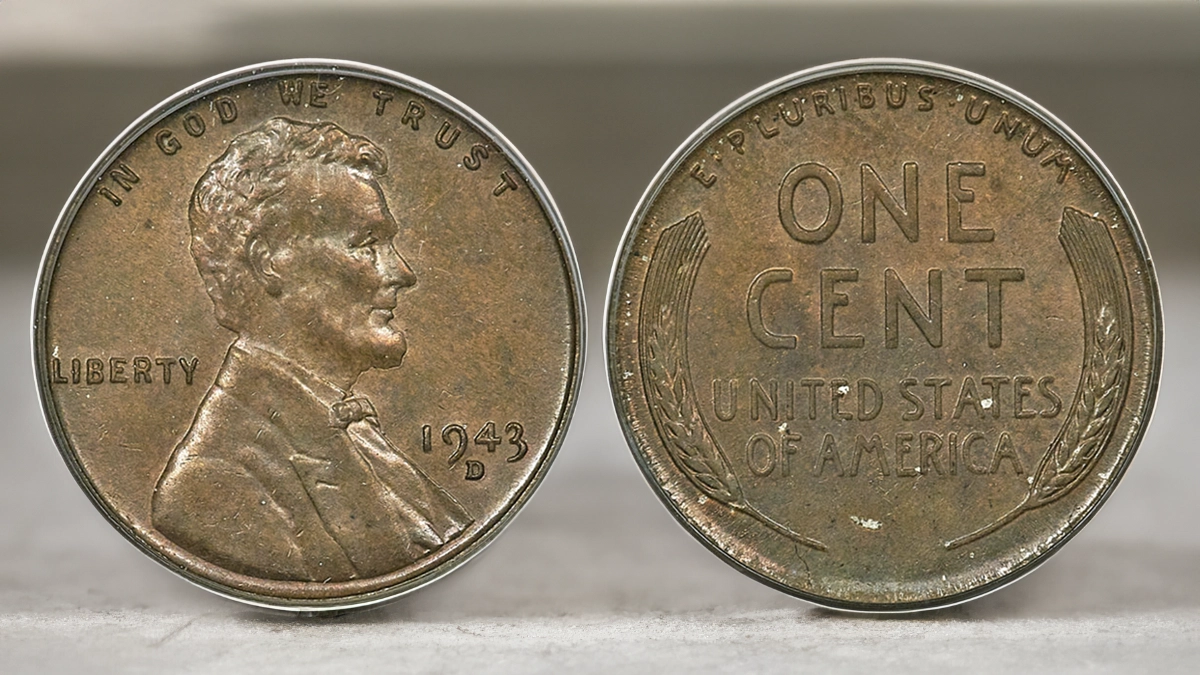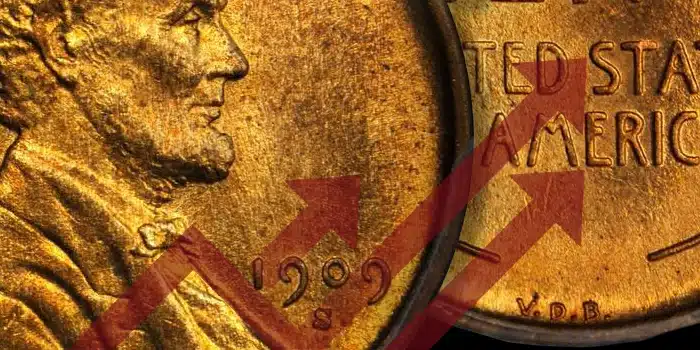
By Charles Morgan and Hubert Walker for CoinWeek Notes …..
The Lincoln Wheat Cent – A Coin Collecting Classic
The Lincoln Wheat Cent has been a favorite of collectors for many years. Part of the appeal is the fact that it is first circulating U.S. coin to feature the likeness of a real person – that person being the 16th President of the United States Abraham Lincoln (1809-1865), one of the most respected and admired leaders in this country’s history. The Lincoln Cent was first issued during the centenary of his birth.
Another part of the appeal of the Wheat Cent is that, with few exceptions, millions of them were issued each year. Combined with the coin’s low face value, this makes the Lincoln Wheat Cent a type that nearly everyone is able to collect, no matter the age or budget.
Nevertheless, the series contains enough rarities and varieties to hold the interest of the serious numismatist. And arguably more than any other coin, the Lincoln Cent is one of the few coin types whose rarities have become well known even by those who are not collectors. Many who don’t know or don’t care about the difference between, for example, the Draped Bust and Capped Bust Large Cents nonetheless have probably heard of the 1909-S VDB and the 1955 Doubled Die Obverse ‘pennies’, and may even know about the 1943 Copper Cent or the 1960 Large Date and Small Date varieties.
The first year of the design includes the V.D.B. varieties that prominently display the initials of the designer, Victor D. Brenner, on the reverse, something that caused controversy at the time even though designers had previously placed their initials on U.S. coins. Because Brenner’s initials were subsequently removed (and then reinstated in a less conspicuous location on the obverse in 1918), the 1909 V.D.B. and 1909-S V.D.B. Cents are considered a separate type.
Lincoln Wheat Cents were made of bronze most years, with a couple of variations during the years of World War II. Because copper was a critical war material, cents in 1943 were produced on zinc-coated steel planchets. That event resulted in the inadvertent creation of two Lincoln Cent rarities: copper (bronze) cents dated 1943, and steel cents dated 1944. From 1944 through 1946, Wheat Cents were produced from reused shell cases, whose bronze composition was nearly identical to the original issues (minus the tin).
Millions of business strike Wheat Cents were produced almost every year, useful in commerce at the time (and for entertainment in the often colorfully-named penny arcades) but today often relegated to “help yourself if needed” cent boxes near cash registers. Collector interest in the type grew more slowly, not taking off until the low-mintage 1931-S was extensively publicized, along with the advent of coin boards in the early 1930s.
Tens of thousands of business strike cents are listed in PCGS and NGC census/population reports, categorized by color definition (BN, RB, and RD, for Brown, Red-Brown, and Red), with many in Mint States grades of MS60 and finer. Prices are modest for most issues up to and including Premium Gem, and for some dates to Superb Gem. Coins with the Red-Brown or Red designations command significant premiums for cents produced through the mid-1930s, with Red cents often very expensive or extremely expensive. From the mid-1930s forward, most certified Wheat Cents have been classified as Red. Higher-priced issues include the 1914-D, the 1917 Doubled Die Obverse, the 1922 No D, the 1936 Doubled Die Obverse, the 1955 Doubled Die Obverse, the 1958 Doubled Die Obverse, and many pre-1936 Red-designated cents graded MS65 and finer.
Both World War I and World War II affected the production of Lincoln Cent Proofs. Those struck from 1909 through 1916 have a Matte or Satin finish, but production ended near the start of the “Great War”. When production resumed in 1936, both Satin and Brilliant finish Proof cents were minted, but thereafter Proofs were brilliant finish only until production ended again with the 1942 issue. No cent Proofs were made during and immediately after the WWII years, from 1943 through 1949.
Thousands of Proof Wheat Cents have been certified, many as Cameo and Deep Cameo, though fewer with the 1936 and earlier Matte or Satin finish. Prices are modest for most issues even as Superb Gem, though Red and Deep Cameo coins are often very expensive. Proofs minted in 1936 and earlier are generally more expensive than those produced after 1936.
In-Depth Wheat Cent Date Analysis by CoinWeek Notes
The 1914-D Lincoln Cent was produced in low numbers. Few were saved in Mint State, making this one of the toughest dates to collect in the entire series.
- 1910
- 1911-D
- 1916
- 1918
- 1918-S
- 1922-D – Including the 1922 “Plain D” or “No D”
- 1925
- 1928-S
- 1929
- 1929-D
- 1931-D
- 1931-S
- 1934-D
- 1936
- 1938-D
- 1943-D Copper

The 1943-D Copper Cent is a unique off-metal transitional error that, were it to sell at public auction, would be worth at least one million dollars.
Exclusive Coverage on CoinWeek

CoinWeek analyzed the market for the 1909-S VDB Lincoln Cent and noted strong growth for this coin over the past five years.
Notable Collections
- Joshua and Ally Walsh: The #1 All-Time finest set of Lincoln Cents when sold by Heritage Auctions. The Walsh sale marked a high point for the series that was only surpassed by the sale of the Blay Collection in 2023. Jack Lee was a major purchaser of Walsh coins. Unfortunately, he did not hold them long enough to turn a profit on many of them.
- Jack Lee: #1 All-Time Registry Set of Lincoln Cents when sold by Heritage Auctions on December 4, 2008. Nearly all coins were Superb Gems. Many pieces sold at a slight discount based on recent auction records.
- Stewart Blay: Blay assembled his historic collection of Lincoln Cents over the course of multiple decades, choosing only the finest coins after studied in-person inspection. Incontrovertibly the finest set every assembled. After Blay’s passing, his Lincoln Cent collection (including Memorial Cents) brought $7.7 million when sold by GreatCollections on January 15, 2023.
Design
Obverse:
A right-facing Abraham Lincoln occupies most of the obverse. At the top, inside a raised rim and above Lincoln’s head is the motto IN GOD WE TRUST, the first appearance of that motto on the one-cent coin. To the left of the portrait is the word LIBERTY, and to the right and slightly lower is the date. Lincoln Wheat Cents were minted at Philadelphia, Denver, and San Francisco; D and S mintmarks appear below the date. Cents produced for 1918 and subsequent years have the designer’s initials V.D.B. on the bottom bevel of Lincoln’s shoulder.
Reverse:
The reverse has a prominent display of the denomination ONE CENT at the top center, each word on a separate line, and below that UNITED STATES OF AMERICA in two lines. E PLURIBUS UNUM, with a center dot between the words, arcs along the top inside a raised rim. To both the left and the right of the center text, and curved to follow the rim, are stylized images of the seed head of wheat, called “wheat ears” by many, and the source for the type name.
Edge:
The edge of all Lincoln Cents is plain or smooth.
Lincoln Wheat Cent Varieties
A sampling of the known varieties of the Wheat Cent include the 1909-S, S Over Horizontal S; the 1917 Doubled Die Obverse; the 1922 No D and Weak D (from either a filled die or an excessively polished die as Philadelphia did not produce cents in 1922); the 1936 Doubled Die Obverse; the 1943 Copper or Bronze and 1944 Steel off-metal rarities; the 1944-D, D Over S; the 1946-S, S Over D; the 1955 Doubled Die Obverse; the 1956-D, D Above Shadow D; and the 1958 Doubled Die Obverse. Many other varieties exist.
Coin Specifications
| Lincoln Wheat Cent | |
| Years of Issue: | 1909-58 |
| Mintage (Circulation): | High: 1,435,400,000 (1944); Low: 866,000 (1931-S) |
| Mintage (Proof): | High: 1,247,952 (1957); Low: 600 (1916) |
| Alloy: | .950 copper, .050 tin and zinc (1909-42 and 1947-58); zinc-coated steel (1943); .950 copper, .050 zinc (1944-46) |
| Weight: | 3.11 g (1909-42 and 1944-58); 2.70 g (1943) |
| Diameter: | 19.00 mm |
| Edge: | Plain |
| OBV Designer: | Victor D. Brenner |
| REV Designer: | Victor D. Brenner |
* * *
Additional References
Bowers, Q. David. The Experts Guide to Collecting and Investing in Rare Coins. Whitman Publishing.
–. A Guide Book of Lincoln Cents. Whitman Publishing.
–. A Guide Book of United States Type Coins. Whitman Publishing.
Breen, Walter. Walter Breen’s Encyclopedia of U.S. Coins. Doubleday.
Guth, Ron, and Jeff Garrett. United States Coinage: A Study by Type. Whitman Publishing.
Lange, David W. The Complete Guide to Lincoln Cents. Zyrus Press.
–. Coin Collecting Boards of the 1930s and 1940s. Pennyboard Press.
Taxay, Don. The U.S. Mint and Coinage. Arco Publishing.
Yeoman, R.S., and Kenneth Bressett (editor). The Official Red Book: A Guide Book of United States Coins. Whitman Publishing.
* * *
The post Lincoln Wheat Cent, 1909-1958 | CoinWeek appeared first on CoinWeek: Rare Coin, Currency, and Bullion News for Collectors.
VarietyErrors
Sign up for FREE News, Videos and Articles!


